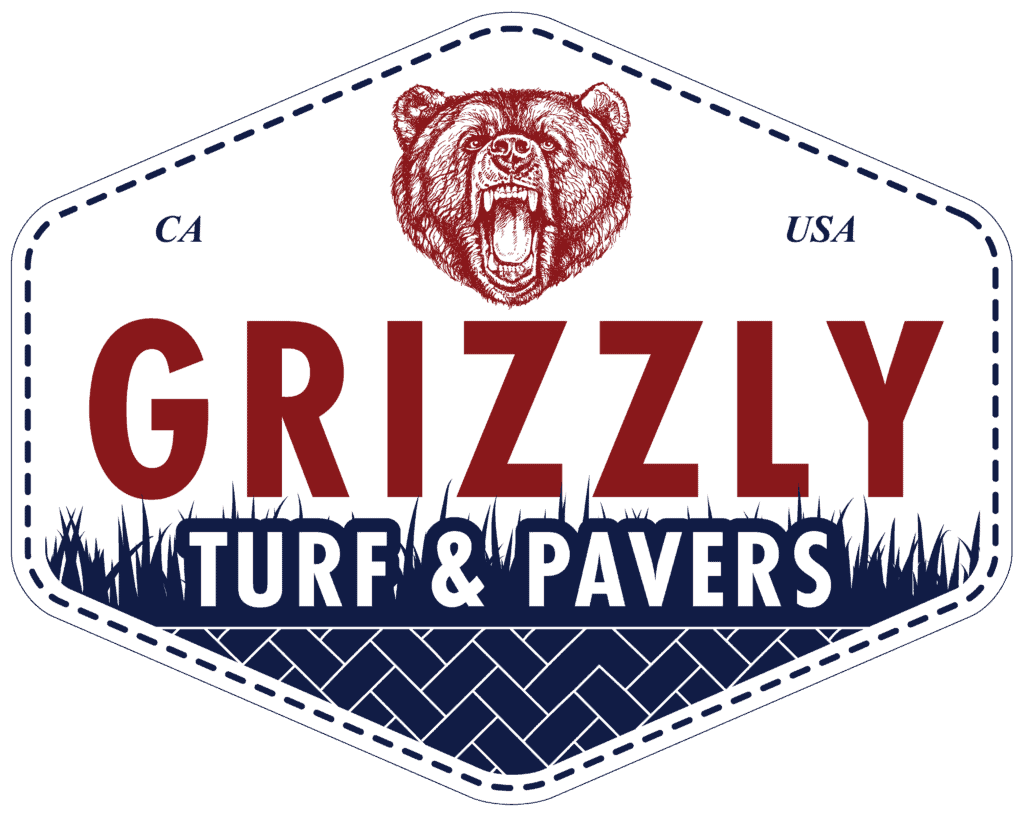What to Know about Drainage
One of the most significant benefits of installing artificial grass has got to be the elimination of puddles and wet spots. Unlike natural grass, synthetic turf won’t leave behind puddles and create safety hazards in the process.
But how does synthetic grass make this happen?
The answer lies in one critical factor: drainage. Drainage allows liquids – including water and pet urine – to penetrate an artificial grass surface, keeping your landscaping dry and healthy. At Grizzly Turf & Pavers, we want to make sure you make an educated decision when purchasing artificial turf – and it begins with knowing all the facts about drainage.
How Does Drainage Work?
When artificial grass is manufactured, special backings are sewn into the synthetic turf material. These backings are perforated in several distinct ways to create drainage.
Once your artificial grass installation is complete, any water will percolate through your synthetic turf and drain into your lawn’s sub-base and foundation. Natural grass drainage can be unpredictable; its drainage level is only as good as the quality of the grass itself.
With artificial grass drainage, you get improved, consistent drainage every time. Generally, the perforations found in synthetic grass backings measure approximately ½ centimeter in diameter, with a drainage depth of more than 30 inches per hour per square yard. The result is a dry artificial turf landscape that is safe to use year-round!
Causes of Poor Synthetic Grass Drainage
Although artificial grass drainage outperforms natural grass, it doesn’t mean synthetic turf doesn’t have its own drainage issues. A secure, well-installed artificial turf surface will guarantee effective drainage every time – however, some factors could affect the drainage of even the best artificial grass:
- Installation errors – Even the slightest miscalculation by an artificial grass installer can result in misplaced turf and blocked drainage.
- Geology – Uneven surfaces can cause natural puddles that affect the efficiency of your synthetic turf drainage system. Additionally, any clay-based soil will also adversely affect your drainage.
- Infill – Too much infill can lead to clogged drainage holes; conversely, inadequate amounts of infill can result in an improper base installation.
How Can You Prevent Poor Drainage?
Preventing poor drainage begins with knowing your landscaping. If your lawn contains soil that naturally drains water, you won’t have to do much to prepare. However, if your yard has historically had issues with drainage, you’ll need to consult with your artificial grass installer to determine the best possible solution.
What Can Help Improve Drainage?
An experienced artificial grass installer – such as the experts at Grizzly Turf & Pavers – can assist you by suggesting a more drainage-friendly sub-base for your synthetic grass installation. By installing the proper sub-base, you can effectively eliminate any significant drainage problems.
If you have a surface that is detrimental to your drainage, your artificial grass installer can help remove it and replace it with more suitable sub-base materials. Commonly-used sub-base materials include crushed or decomposed granite, limestone chat, and washed limestone.
For more information, let the experts at Grizzly Turf & Pavers answer your questions! Our team of artificial grass installers is always ready, willing and able to help make your synthetic grass installation vision a reality.





